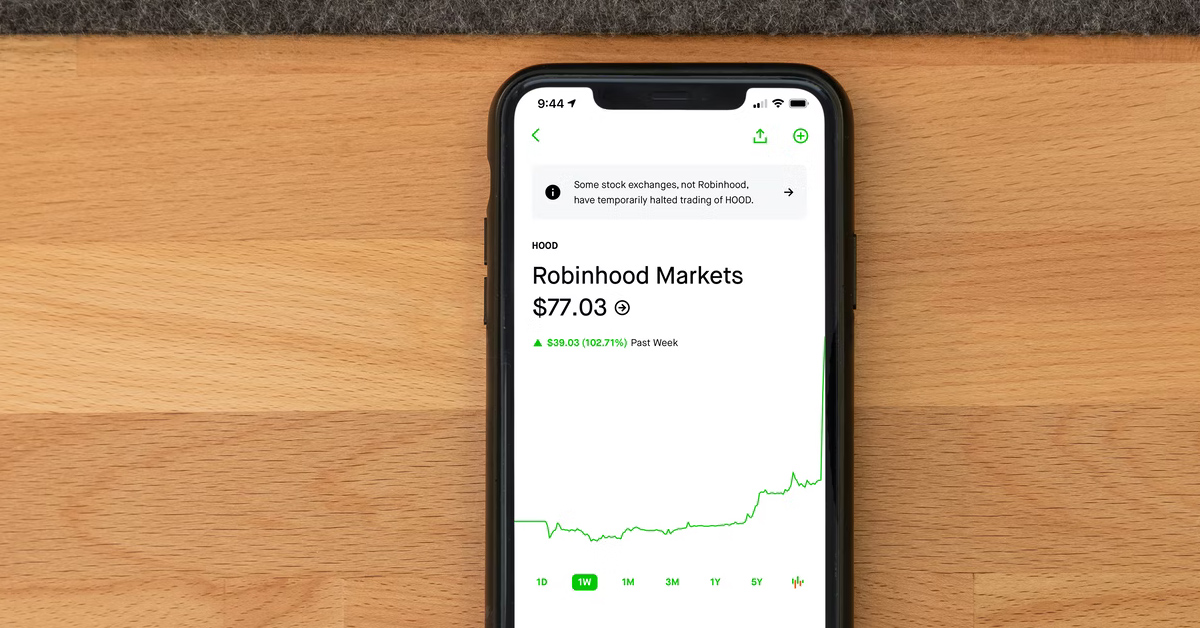How To Turn Off Share Lending On Robinhood

Robinhood is a stock trading platform that boasts the slogan “investing for everyone”. This approach has drawn both seasoned and novice traders to invest in stocks on the platform. However, with the addition of the share lending feature, also known as “Margin Investing”, many traders have taken issue with the platform. There have been numerous rumors and concerns that the feature allows the platform to lend out a user’s shares to other traders and investors who are not connected to the user. Is there any truth to these rumors?
Robinhood added the share lending feature, which allows the platform to loan out a user’s stock shares to outside investors and companies without receiving any interest in return. By default, the feature is automatically turned on in the app, but users have the option to turn it off if they choose to do so.
Many users are opposed to the share lending feature on Robinhood, and as a result, they are searching for ways to turn it off. In this article, I will be detailing the steps to help you successfully disable share lending on your Robinhood app.
Can Robinhood Lend Out Your Shares?

Yes, Robinhood can loan out your shares. But there is a process to this. To understand what Robinhood does with your shares and if they can be lent out to other investors, you need to know what share lending is.
Share lending is when investment firms like Robinhood loan out stock shares to borrowing investors, traders, and companies. This is a way for these firms to generate additional revenue from stocks that would otherwise remain unused in their portfolio.
The borrowers of these shares are typically short sellers, who provide collateral in the form of cash or other securities to the lenders. So if your shares are borrowed and given to short sellers, Robinhood will receive collateral on your behalf to ensure the safety of your shares. If the shares are not returned, you will receive the collateral, which is typically worth the same as the lent shares.
Lenders may include mutual funds, sovereign wealth funds, pension funds, and exchange-traded fund (ETF) providers, as these types of firms are typically long-term holders of equities.
Brokerage firms like Robinhood also participate in share lending using shares from retail investors’ accounts. This helps reduce management fees for their investors, so if your shares are lent, your management fee will be lower.
Share lending practices also apply to bonds and commodities, which is why it is also known as securities lending. This has become more popular in recent years as declining management fees have made investment firms look for other sources of revenue. According to DataLend, a financial data firm, the worldwide revenue from security lending was $7.66 billion in 2020, with a $2.87 billion increase in broker-to-broker activity.
If you’re an investor who is shorting a stock, share lending is useful because you have to borrow shares to put on your bearish position. Critics argue that share lending practices can hurt share fund investors, as investment firms forgo their voting rights when they loan out shares, and may own stocks that are easier to rent out.
Other concerns with this practice include a lack of transparency and an increased risk of counterparty losses if trades do not go as planned.
How Does Share Lending Work?

Here are further details on how institutional traders perform share lending to help you understand the process better:
- Institutional investors either use in-house agents or third-party agents to match their shares with borrowers. These agents receive a service fee from the revenue generated from the loan.
- The fee is agreed upon beforehand and depends on the demand for the lent security.
- The institutional investor or lender invests the collateral to earn additional interest or income while their shares are out on loan.
- Borrowers may include other banks, hedge funds, broker-dealers, and other key agents. When the borrower is done with the shares, they are returned to the lender.
- If the collateral is in the form of cash, the borrower may receive a portion of the income earned from reinvesting.
When it comes to retail investors, share lending is easier with Robinhood:
- Robinhood matches shares held by retail investors like you with retail investors who need to borrow shares.
- The shares are lent out with collateral provided in cash or stock by the borrower.
- Robinhood initiates and oversees the entire process.
- Please note that this may occur without your knowledge, as you are a holder of the specific share being lent out.
- Robinhood invests the collateral to earn additional interest while the shares are out on loan.
- Borrowers include other retail investors like you.
- If the collateral is in cash, a portion of the income earned from reinvesting is not given back to the borrower, but kept by Robinhood.
These steps outline how Robinhood initiates share lending (also known as margin investing). This gives you a better understanding of what happens when your shares are lent out to retail investors practicing margin investing. Now, you can choose to leave the share lending (margin investing) feature on your account or turn it off.
How To Turn Off Stock Lending (Margin Investing)

Here’s how to turn off margin investing (share lending) on Robinhood’s mobile app:
Step 1: Log in to the app
Open the Robinhood app on your Android or iOS device and log in to access your account.
Step 2: Tap the “Account” button
On the bottom-right corner of the screen, tap the “Account” button. This will bring up a menu.
Step 3: Tap “Settings”
In the menu, select “Settings” to access your account settings. Here, you’ll see a list of your account details and settings you can change.
Step 4: Select “Robinhood Gold”
From the list, choose “Robinhood Gold.” Your account must be a Robinhood Gold account to proceed.
Step 5: Tap “Margin Investing”
In the Robinhood Gold menu, select “Margin Investing” at the top. This will take you to a new page.
Step 6: Tap “Disable Margin Investing”
To disable share lending, tap “Disable Margin Investing.”
Step 7: Go back to the “Account” screen
Return to the main “Account” screen, where you originally accessed the settings.
Step 8: Go to the “Investing” menu
From the main “Account” screen, go to the “Investing” menu as if you were going to make a trade or buy a stock.
Step 9: Tap “Day Trade Settings”
In the “Investing” menu, select “Day Trade Settings” from the list.
Step 10: Disable “Instant Settlement”
In the “Day Trade Settings,” turn off the “Instant Settlement” option. This will prevent instant settlement and therefore, prevent Robinhood from performing share lending with your shares.
Note: Only Robinhood Gold account holders can disable share lending. However, all accounts can disable instant settlement, which will also stop Robinhood from lending your shares. The explicit steps to disable share lending are only available to Robinhood Gold paying account holders.
